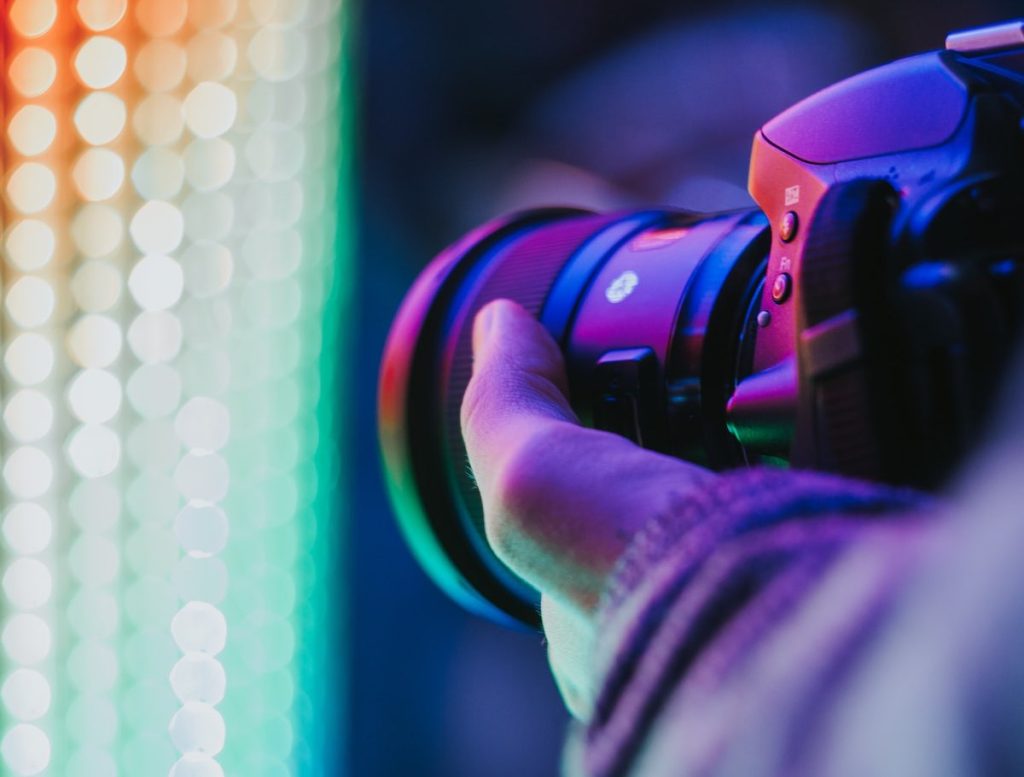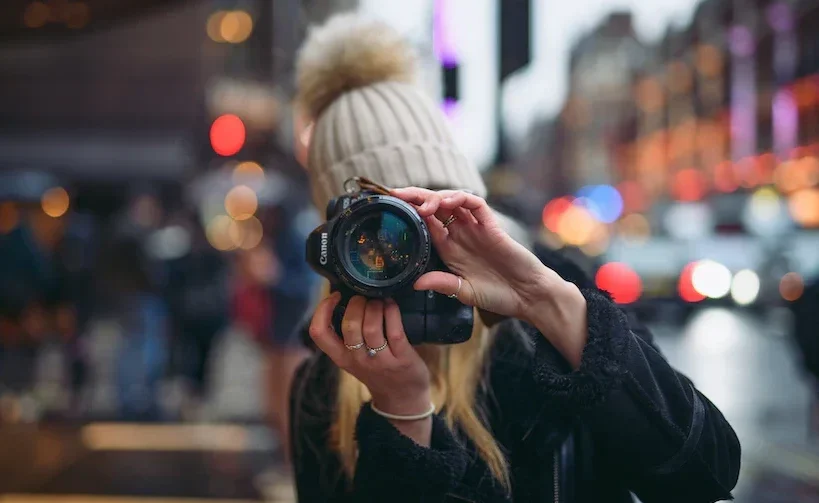8. Know When to Use a Tripod
Tripods are one of the greatest inventions in photography. They all but eliminate one of the trickiest problems there is – a lack of light. With tripods, you can shoot multi-minute exposures and capture details so dark that they are invisible to the human eye. Even in a brighter scene, tripods improve the stability of your composition and help you take sharper photos.
So, when should you use a tripod? If your subject is stationary, almost always. That means landscape photographers, architectural photographers, and still-life photographers better have a good excuse if they aren’t using a tripod.
Macro photography is another case where tripods are essential. At high magnifications, even the excellent in-body image stabilization (IBIS) of today’s cameras cannot compensate for the very low light and long shutter speeds required for truly excellent macro work. Even if you are using flash, it is very difficult to get the plane of focus right. The only solution is a tripod.
Event photography and action are a bit different because it’s true that a tripod can slow you down. The same is true of travel photography; as much as you may want to bring along a tripod, it might not be worth the hassle.
That’s fair, but know that you’re missing out whenever you leave your tripod at home. If you offered me the choice between an entry-level DSLR and a tripod versus the best camera/lens combo on the market without one, I’d pick the tripod kit every time.
9. Pay Attention to the Edges of Your Composition
When you’re composing a photo, it helps to pay careful attention to the edges of the frame. Simply put, the edges have an exaggerated impact on the “feel” of your photo!
For starters, make sure that your subject has enough breathing room so that it’s not bunching up against the edge of a photo. And certainly don’t cut off an important element, like the top of a mountain, unless you have a very good reason.
Along the same lines, any distractions in your photo will draw more attention if they’re close to the edge, because they’re dragging a viewer’s attention further from the main subject of the photo. If you only think about the main subject and don’t pay attention to the rest of the frame, you might end up with a sloppy composition.
10. Know When to Use a Flash
Flashes aren’t just meant for dark environments.
Don’t get me wrong – they’re great if you need some extra light. Get an external flash, tilt it at the ceiling, and use a relatively long lens (50mm or longer). Everyone you know will be amazed at the quality of your event photos. It’s the easiest way to get good results without actually knowing what you’re doing.
But flashes are useful outdoors, too, even in the middle of the day. If you’ve ever heard of “fill flash,” this is why it’s so important. You can fill in ugly shadows on your subject just by using a gentle flash – and most people looking at the photo won’t even be able to tell.
It’s silly, but I like to tell people that their camera’s built-in flash is more useful on a bright, sunny day than in the dark. That advice holds just as true here.
11. Clean Your Camera Lens
I’ve seen too many people walking around with the front element of their camera lens dirty, dusty, and smudged. That’s the easiest way to get blurry photos 100% of the time.
Of course, a little bit of dust won’t do any harm; it won’t even be visible in an image. There are small particles of dust inside every lens, which are impossible to clean without taking apart the lens – and they have no impact on a photo whatsoever.
Instead, I’m talking about lenses that have never been cleaned, with grime and fingerprints that haven’t been removed in ages. Do yourself a favor and get a microfiber cloth and lens cleaning solution. Bring them along on trips and use them at least once a week. Check out How to Clean SLR Camera Lenses for more information.
12. Don’t Use a Cheap Filter
The second easiest way to get blurry photos 100% of the time is to use a cheap filter on the front of your lens.
Personally, when I just started out in photography, my grandfather gave me an old, clear filter from his film camera. It fit my lens perfectly; I was so surprised that I kept it on my lens all the time, never worrying if the glass was up to today’s standards or not. Turns out that it wasn’t. The corners of all my photos were blurry, and any mild bright area in the photo (like the sky or a lamp at night) turned into a wicked flare. Here’s a photo I took with this filter, followed by a crop:
Don’t make the same mistake I did! Yes, this was an old filter, but cheap ones today do exactly the same thing. Personally, I never use a clear, protective filter on my lens anymore, except in environments where I also need protective eyewear. If you do need to use a filter, make sure it’s a good one from a name brand like B+W and not the first on the low-to-high price list on Amazon.
13. Learn Basic Post-Processing
Post-processing isn’t very high on the typical photographer’s priority list, but it definitely should be. Although postprocessing cannot fix a bad photo, it can turn a good photo into something truly exceptional.
It’s easy to overdo it when you’re post-processing, so the most important thing is to make sure none of your edits are permanent (AKA “destructive editing”). Either use the Save As command to preserve your original files or, better yet, edit in software like Adobe Lightroom or Capture One Pro that stores your edits in a separate file rather than baking them into the image.
Post-processing is about imparting a mood and guiding your viewer’s eye in an image. You’ll get better and better at this over time. My top recommendation? Be subtle. You don’t want your photos to look over-processed.
14. Back Up Your Photos
Almost every photographer I know has lost some important photos at least once in their life. Don’t let this happen to you.
For starters, keep a backup of every single one of your photos. Your photos should never be stored on just a single hard drive at a time, because eventually, your hard drive will break. It’s not a question of if, but when.
Ideally, you would have at least three copies of all your photos at a given time. This should include at least two different media types, such as an internal hard drive and a removable storage medium. And at least one of the backups should be stored off-site. This is known as the 3-2-1 rule. It’s the best way to avoid losing any of your photos.
Personally, my photos are my most important possessions, and I don’t want to lose them no matter what. My hard drive is backed up online in real time, and I have several external hard drives with complete backups as well. It’s overkill, but that’s the point.
15. Get Organized
Whether you’re an organized or messy person, it’s very important that your photos are easy to find. It’s not just about speeding up your workflow; if you don’t remember how you’ve organized your hard drive, you might end up deleting a folder that contains important images without realizing it.
My method is simply to create a new folder of images for every year, then divide each year by months (labeled “01 January,” “02 February,” and so on, for alphabetical order). Then in my post-processing software, I sort and organize the photos separately into different collections. This way, I can find images from a given location or intended for a particular project.
Another very useful method is tagging. You can tag your photos in most postprocessing programs with many tags, like the name of the people in your photo or the species of animal (if you’re a wildlife photographer). This makes it even easier to find a photo once you’ve taken tens of thousands.
But there are many possible methods. Some photographers prefer to organize their photos by year, then divide each year by specific events rather than months. The exact method doesn’t matter; use what you’re comfortable with. But make sure that you start good habits early, or you’ll eventually run into a lot of issues.



